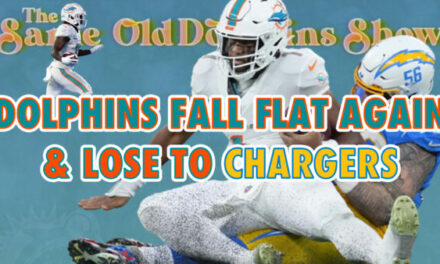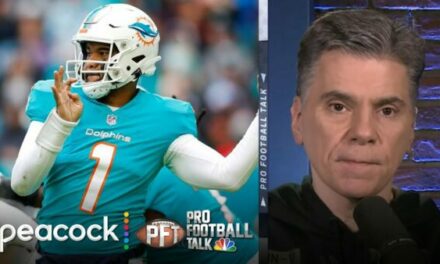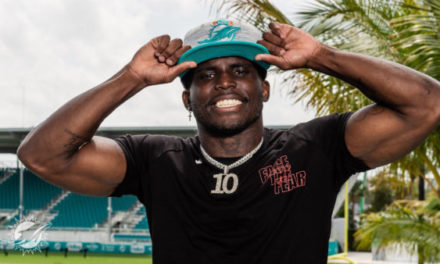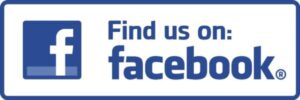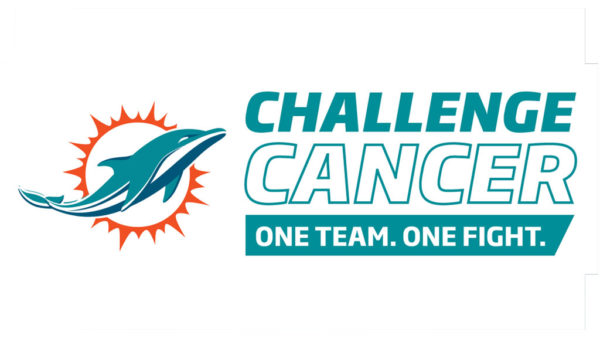
The runway to the 2022 NFL Season is starting to run out – we’re getting closer, Dolfans! As I type this, the Draft has concluded, and we’re less than 24 hours away from the schedule release, the last “event” of the NFL Offseason cycle before OTAs and mini-camps ramp up over the next month and a half. This offseason has been, by and large, a pretty successful one, in my opinion. It shares some parallels to the 2002 offseason. While there wasn’t just one marquee acquisition like the Ricky Williams trade in 2002, the amount of work the Dolphins did this year feels like they’ve bolstered the talent on the roster to as close as it’s been to those levels. The Dolphins had just three picks in the 2002 Draft because of the trade for Williams. Similar vibe here. That 2002 team was loaded with talent, but because of Jay Fiedler’s broken thumb, mustered a 9-7 record and missed the playoffs. That’s certainly not the outcome we want, or dare I say expect, for the Dolphins this year. They’ve ripped off 19 wins over the past two seasons, both ending up making the playoffs. The additions the Dolphins have made make many, myself included, feel like they’ve done enough to get over the hump and into the postseason, even the slaughterhouse that is the AFC. With this piece, I want to briefly look at some of the key acquisitions Miami this offseason and to take a look at some of the question marks, in my eyes, that hover around the Dolphins and how they might be addressed.
In terms of free agency and trades, the marquee names are Terron Armstead and Tyreek Hill. That’s two whales as far as acquisitions go. Terron Armstead was the best player on the free-agent market, and Tyreek Hill is probably the top non-quarterback offensive player you have to gameplan for in the league. These are big deals! Literally, I also thought that pairing Armstead with Connor Williams on the left side is pretty intriguing. If you’ve watched any of the 49ers’ offense under Shanahan/McDaniel, you’ll notice that their left guard, Laken Tomlinson, did a lot of pulling and operating in space. Connor Williams is a bit more mobile and might help give the Dolphins more of a “left-handed” running game – think Seattle when they had a left side of Walter Jones and Steve Hutchinson – back in Shaun Alexander’s prime. A lot of things going left, which suits a lefty quarterback nicely. If fully healthy, Miami’s upgraded their speed at running back with Edmonds and Mostert and given themselves a capable inside zone runner in Sony Michel. The receiving corps now has multiple burners which can separate, most notably Hill and Waddle.
The defense has every piece back except CB Justin Coleman, who signed back with Seattle after losing the slot corner job to Nik Needham early in the season. Xavien Howard and Emmanuel Ogbah got massive extensions. Like 2002, Miami’s Draft started in the third round and added Georgia LB Channing Tindall to the mix. He, too, has speed and tremendous athletic ability and should find a niche role early on.
How these pieces all fit together is going to be fascinating to see. We have a first-time coach in Mike McDaniel. Since his first year at Alabama, Tua Tagovailoa’s been on his sixth offensive coordinator. Brian Flores is no longer around, and the keys to the defense are now decisively Josh Boyer’s. The roster feels like it’s the best it’s been in nearly two decades, and Miami’s nearly been a playoff team two years running. As we know, however, there are no certainties in the NFL. All teams have concerns, and the Dolphins are no exception. But what are they?
[pickup_prop id=”22826″]
The best way I can break them down is to list them off and write about them, so we’ll start there. An ancillary concern to me is the depth at certain spots outside of the O-line, which I think we all know is a given, and I’ll touch on that later. Specifically, at this time, I’m worried about the depth at CB behind Xavien Howard and Byron Jones on the perimeter. Last season, specifically the Jacksonville game when neither played, Miami used Justin Coleman and Noah Igbinoghene. Coleman’s no longer in Miami, and Igbinoghene is probably on his last training camp as a Dolphin barring major improvement. What happens if X or Byron misses significant time? I also worry about not having a true NT type behind Raekwon Davis. Yes, I know Miami has John Jenkins, but he doesn’t offer much as a run-clogger; too many battle scars. Akiem Hicks being out there intrigues me, and perhaps he could be, if you’ll excuse the Patriots reference, “2018 Danny Shelton” cog for Miami. Maybe more. There’s still time before Training Camp, so perhaps depth at one or both of those spots is found.
Onto bigger concerns. These, to me, are all *concerns*, but I’ll stack them from least to greatest.
Josh Boyer: Much has been made about the defense and how poorly it started off the first eight games last year. The myriad list includes heavier use of Cover 3 (zone) than Cover 1 (press man); Jevon Holland and Jaelan Phillips both missing two weeks of preseason and not being up to speed; Phillips being tasked to do too much; injuries to Xavien Howard and Byron Jones; and generally poor play. The run defense was above average statistically from the Jacksonville game on, but overall, the defense was substandard until the road game against Buffalo in Week 8. I highlight that game because, after it, both Emmanuel Ogbah and Xavien Howard said, and I’m paraphrasing here, “…that Josh Boyer went back to what we were doing before…”, meaning 2020. Later on, during the morning of Miami’s Monday Night Football game in New Orleans, Brian Flores went on the Rich Eisen Show. Rich asked Flores about Miami’s turnaround – they’d won six in a row at that point – and Flores also cited the road game in Buffalo.
There’s the “he said, she said” game that’s played out in terms of what changed. Was Flores taking a heavier hand in setting up the defense in calling plays? Did Boyer simply scrap game plans and revert to 2020? If you’ve scoured Twitter since-departed Safeties, Coach Gerald Alexander’s wife took to Twitter to claim that he was the one responsible. Oh, to be in that smoke-filled room in Miami Gardens, but I digress. Two of those actors are gone now, and Boyer is the man at the helm.
With the additions of Sam Madison and Patrick Surtain, who thrived in press coverage, along with Steve Gregory, who came over from the Patriots, it would seem like additional emphasis will be placed on more Cover 1 and Cover 0 looks with that bunch in-house. Boyer’s background has been with DBs, working with them at the NFL level since 2009. There’s an emphasis on looking at the defense through the lens of the secondary. But what about the front seven? How does Boyer shape the front seven with Flores, whose background was coaching LBs, now in Pittsburgh? That’s the root of my concern.
One thought that I have is that with the development of Jaelan Phillips, we see more 4-man fronts. In my opinion, Miami put too much on Phillips’ plate early in the season. Once they let him become an edge player exclusively and mixed him into Miami’s 5-0 package and 4-1 package, he thrived and set the franchise rookie sack record with 8.5 sacks. I feel like Miami should utilize his skill at the edge, and I wonder if they can use him as a DE in 4-man fronts with Van Ginkel as an edge LB, effectively playing an Over front with more speed. Miami played these Over fronts with Zach Sieler as the RDE the past two years. Mixing these fronts on 1st & 2nd downs with more Cover 1 allows you to play a strong safety closer to the LOS or in the box, which typically helps against the run. It might also give you a way to give Brandon Jones more snaps. After all, Eric Rowe is a free agent at the end of 2022, so it might be a way to give Jones more of a look to determine if he could handle that role full-time.
Finally, speaking of the 5-0 package, Miami’s largely been using their Cover 0 looks out of this. However, there’s a lot more to that package in the playbook. I’d highly recommend you check out Coach Vass’s videos on YouTube about the package. Look up the “Patriots Odd Mac 0 Package,” and you’ll see almost two hours of video about the formation. There’s a LOT of great information in there that details the rest of the meat on the bone Miami hasn’t utilized in that 5-0 package. This is especially true with coverages, including variations of cloud, double, flat trap/Kathy, and the use of “Rat.”
I know this is a lot in terms of moving parts with respect to the controls that Boyer can use, but it’s up to him to choose to employ them. How he does it and how it works without Brian Flores is something to focus on.
Miami Dolphins 2022 Draft Recap and Analysis – https://t.co/jTLjtUms4R https://t.co/6BLwVDyOfL
— DolphinsTalk.com (@DolphinsTalk) May 15, 2022
Offensive Line: A given, so I apologize if you expected something else to be here. Obviously, the Dolphins recognized their deficiencies and addressed it by signing Terron Armstead and Connor Williams and bringing in three UDFAs, two of which remind me of a pair of 49ers players under Mike McDaniel. More on that shortly. If Terron Armstead stays healthy, he’s the best LT in the NFL, not named Trent Williams. Period. No need for further discussion there. However, the Dolphins are already Dolphin-y with respect to Connor Williams. What should be a damn near Pro Bowl-caliber LG is being tested at C. The Cowboys, Williams’ previous team, have tinkered with this in the preseason before, and the evidence has always proven that Williams is better at LG. Miami would be wise to leave him there. There’s an awful lot of 49ers tape that has former LG Laken Tomlinson climbing to the second level, working double-teams, pulling on tosses, and counter-action plays. Williams is more athletic and should be used in that capacity. But that leaves essential Michael Deiter and Michael Deiter alone at C, which is less than ideal. Assuming Miami leaves Robert Hunt at RG, there’s a competition at RT brewing between Liam Eichenberg and Austin Jackson. That Miami has mentioned Austin Jackson so frequently thus far is a bit flabbergasting considering how poorly he’s played since hurting his foot against Seattle in Week 4 of his rookie year. Eichenberg intrigues me more. He’s a better run-blocker, more assignment-sound, and after the Baltimore game last year didn’t give up a sack in pass-pro the final seven games. He has moved around frequently as a rookie, had his technique tinkered with, and struggled to adjust at first. Hopefully, Miami’s move to Matt Applebaum fixes some of these issues. If not, Robert Hunt may be called upon to be the RT…which would open a hole at RG, and the whack-a-mole game continues.
Miami needs to sort out C and RT, or else they’ll run the same risks as last year, despite massively improving the left side of the OL. The good news is that Miami’s coaching staff has a strong group of coaches whose background is in the OL, including new Offensive Coordinator Frank Smith, Matt Applebaum, Mike Person – who played under McDaniel in San Francisco, and John Embree. Implementing zone concepts should also help, especially with Terron Armstead and Connor Williams in the fold. Two players to keep an eye on would be UDFAs Kellen Diesch and Blaise Andries. Both are taller, mobile guys who remind me of 49ers Justin Skule and Daniel Brunskill, who were late-round selections that have started multiple games for the 9ers.
Ultimately, I think this line hinges on what Miami does at C and RT. I think they ought to be investigating getting proven players at both spots rather than hoping the previous draft picks work out. But it’s the Dolphins, and outside of left tackles, they’ve not been good at identifying IOL players since they drafted Mike Pouncey in 2011. The RT issue is worrisome, but, having seen some of the run game playbook that Shanahan/McDaniel ran in Atlanta, there are a lot of play-action fakes that give defenders a bit of “eye candy,” which helps provide extra time in pass-pro. Is it enough? I suppose we’ll see how guys like Deiter, Eichenberg, Jackson, or some yet-to-be-determined players fill out those roles. The rest hinges on my main concern.
Tua Tagovailoa: Again, an obvious concern here. However, my reasons are likely not very obvious. I’m not concerned about arm strength, his ability to throw the deep ball, or his work ethic. I feel I’ve made that clear on various podcasts for DolphinsTalk over the past year and a half. My concerns with Tua are two-pronged. First, with Mike McDaniel’s new offense, there are a LOT, and I emphasize a LOT of things going on with pre-snap reads, motions, fakes, and timing. Tua’s been a mixed bag in this regard. He’s obviously very skilled at the RPO game, and his footwork, when right, is near elite.
The RPO will still exist within McDaniel’s offense, but it’s not going to be the concept run most of the time. There is wide zone, inside zone, true play-action, west coast principles, bootlegs, and stuff from the shotgun. Many of the principles of the offense, especially in run game and play-action, are based on timing from motion. Miami didn’t emphasize this last year, and Tua was a trainwreck at times in terms of timing his cadence and getting the ball snapped to incorporate certain fakes off of motion. The road game in Buffalo, his worst outing other than the Titans game, comes to mind as it was Mike Gesicki yelling and getting players lined up properly and not Tua. That’s a bad look. Now, to understand what I mean with motion and timing, watch the 2019 game of the 49ers vs. Panthers. San Francisco absolutely smoked Carolina 51-13 and put up over 230 yards rushing with 5 TDs on the ground. This was the only time I’ve ever seen a team make Luke Keuchly look silly and induce him to take false steps, shoot the wrong gaps, and have difficulty figuring out where the ball was. This is all influenced by motion, timing, faking handoffs to guys running jet motion, etc. Tua needs to master the intricacies of the offense. That’s going to take time for him. It’ll take time for everyone not named Raheem Mostert if we’re being honest. But Tua’s the QB; he makes the offense go, and this is certainly more complex than what he ran under Chan Gailey and under George Godsey/Eric Studesville. His mastery of the “soft skills” of the offense will be imperative.
Second, with so much play-action in this offense, he’s going to have to get used to turning his back to the defense. Godsey and Studesville’s offense didn’t require this a whole lot as they relied more on RPOs. But with RPOs, the QB isn’t turning his back to the defense and reacquiring the picture post-snap. Think Peyton Manning for reference. Chan Gailey did require play-action looks from Tua in his rookie campaign but often tied them to bootlegs which means half-field or triangle reads. Translation: this is simpler for the QB. There’s no problem with that, especially with a rookie. But to unlock the full potential of this offense, you have to be able to execute play-action and have the QB be able to stay in and throw from the pocket. This is an unknown on a larger scale for Tua. We simply don’t have much of a sample size to go from.
— DolphinsTalk.com (@DolphinsTalk) May 15, 2022
What sticks with me about the play-action stuff relates back to two of Miami’s final three games from 2021, New Orleans and Tennessee. For context, the Saints came into the Monday Night Game having shut out Tom Brady and the Buccaneers 9-0 on the road. They actually used an old Bill Belichick concept against Brady where you show either single high or two high safeties pre-snap, but then rotate into the opposite post-snap, often using one of those two safeties to cover the hole (middle of the field behind the LBs) or to double a receiver running a crossing route. This is a closed-middle (single high safety)/open-middle concept (two deep safeties). The Bucs stunk that day, and the Saints, albeit shorthanded because of the Covid List, made Miami work for everything on offense in that Monday Night Game, in which they mustered just 13 points. Remember Nik Needham had a pick-6 in that game to give Miami their full 20-point total. George Godsey wisely didn’t really have Tua try and challenge the Saints over the middle of the field most of the game. The only time Tua did, he had Jaylen Waddle open on a dig route and Mack Hollins coming open on a post (a Mills concept) against a single-high safety, Marcus Williams. Tua misread this horribly and tried to throw to the post-Hollins instead of Waddle on the over. He threw it behind Hollins, and it got picked.
A week later, the Titans completely bamboozled Tua by setting up flat-traps and using “Vice,” another Patriots concept where you bring your backside safety to double-cover the slot receiver, often Jaylen Waddle. This frequently left Mack Hollins running free outside and had DeVante Parker 1-on-1 on the backside against Jackrabbit Jenkins, a pretty big height and jump-ball mismatch in favor of Parker in the Dolphins. Tua failed to take advantage of both of these things and played his worst game as a pro, and the Dolphins missed the playoffs.
Now, the open-window/close-window concept is tough. It broke Jared Goff in the Super Bowl. It broke Tom Brady in that Saints 9-0 shutout of Tampa. It broke Tua twice in two weeks. QBs have to recognize these things and know where their outlets and check-downs are, especially against complex coverages. Incorporating the use of full play-action where the QB executes a handoff fake to run action with his back turned to the defense and reacquiring the “picture” of the defense when you whip your head back around is a skill and takes time to learn. These subtleties are things that Tua hasn’t been asked to do much, likely because of his prowess with the RPO concept. There’s going to be a learning curve involved, and how quickly he can climb that curve will unlock the potential of the offense more. If Tua has a hard time grasping that, you’re limiting the playbook, making it easier for opposing defenses to lock in on your tendencies.
How the Dolphins try to overcome these concerns will be fascinating to watch. With a new offensive staff and the training wheels fully off Josh Boyer, it may take some time early in the season for Miami to iron out the kinks on both sides of the ball. It doesn’t help that the first four games of the season are an absolute gauntlet for Miami to run. Finding answers to these concerns and finding them quickly is imperative for Miami to put itself into playoff position later in the year.


